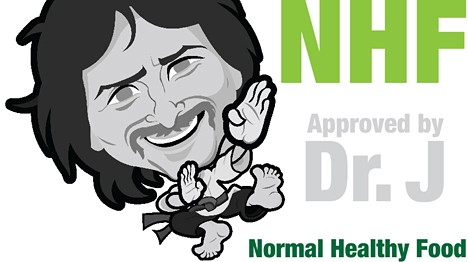
Let’s face it: much of the food that we eat is crap. One reason for this is it’s hard to figure out what is in our food. We rely on food labeling for guidance in making better nutritional decisions.
Food nutrition labels play a major role in choosing products to take off the shelves, place into our grocery cart, and then put into our body. These labels have been the subject of battles between the Food and Drug Administration (FDA), the food industry, and consumer advocates. And what these battles have produced is a mumbo-jumbo of micronutrient percentages, calories, and confusing portion sizes.
In trying to help us, some folks got the bright idea to add additional jargon to food packages, such as low fat, low sugar, no added sugar, low salt, and a few others modified with words like light, lite, lightly, zero, trivial source of, negligible source of, reduced, and few.
In my opinion the result of this has been a consistent march in the wrong direction. To rectify this, I am proposing a new, more concise practical standard to get us all back on track.
Dr. J’s Tell It Like It Is (TILII) Food Labeling System
-
NHF: Normal Healthy Food (Replacing all the low, light, reduced, etc., labels)
-
HF: High Fat
-
HS: High Sugar
-
HNA: High Sodium
-
HCAL: High Calorie
-
HCOL: High Cholesterol
-
Note: Other than for NHF foods, more than one label denomination may be used on a particular food item.
If you look at the Government’s Dietary Guidelines For Americans for appropriate and healthy food choices that will keep our diets within the daily recommendations for the amounts of fat, sugar, salt, and cholesterol, you will see that most of the food that we eat are in categories other than NHF, and only the healthy and appropriate choices are now mislabeled as low, reduced, etc., when in fact they are not low or reduced, but they are the correct normal amounts of healthy daily nutrition to build strong and fit bodies and minds.
The Dietary Guidelines state:
A healthy eating pattern limits intake of sodium, solid fats, added sugars, and refined grains and emphasizes nutrient-dense foods and beverages.
People who are most successful at achieving and maintaining a healthy weight do so through continued attention to consuming only enough calories from foods and beverages to meet their needs and by being physically active.
Americans currently consume too much sodium and too many calories from solid fats, added sugars, and refined grains.
To change this the guidelines recommend consuming only an appropriate level of calories each day. This is approximately 1,600 to 2,400 calories per day for adult women and 2,000 to 3,000 calories per day for adult men, depending on age and physical activity level. Young children need from 1,000 to 2,000 calories per day, and older children from 1,400 to 3,200 calories per day, with boys generally having higher calorie needs than girls.
Looking at the recommended percentages of carbohydrates, protein, and fat, the recommendations are:
-
Young children (1–3 years) 45–65, 5–20, 30–40
-
Older children and adolescents (4–18 years) 45–65, 10–30, 25–35
-
Adults (19 years and older) 45–65, 10–35, 20–35
The Guidelines also recommend (1) a reduction of daily sodium (which we mostly get from salt) intake to less than 2,300 milligrams (mg) with a further reduction to 1,500 mg for persons who are 51 and older and those of any age who are African American or have hypertension, diabetes, or chronic kidney disease, (2) consuming less than 10 percent of calories from saturated fatty acids, and (3) consuming less than 300 mg per day of dietary cholesterol.
In addition, they recommend that we consume as low an amount of trans fats (partially hydrogenated oils and other solid fats) as possible, along with a reduction in calories and added sugars.
If my simple TILII food labels are followed by consuming mostly Normal Healthy Foods (NHF) and minimizing the following five categories, I think you will comply with the Dietary Guidelines.
Besides, they wouldn’t need to advertise that shopping is a pleasure if it really were. My goal is to get the shopping done as quickly as I can and do better things with my time than spend it in a supermarket trying to understand confusing food labels.
The TILII food labeling system – Taking the confusion out and putting some healthy in to shopping.

By Dr. J, a maxillofacial surgeon living in Florida. Dr. J has travelled to Haiti to treat indigent patients and has taught as an associate professor at a Florida dental college. In his spare time Dr. J is a dedicated runner as well as a pilot who flies his Piper Cherokee Arrow throughout Florida. He has a black belt in karate. Dr. J has written for CalorieLab since 2007.
Dr. J’s ‘Tell It Like It Is’ Food Labeling System is a post from:
SOURCE: – Read entire story here.


